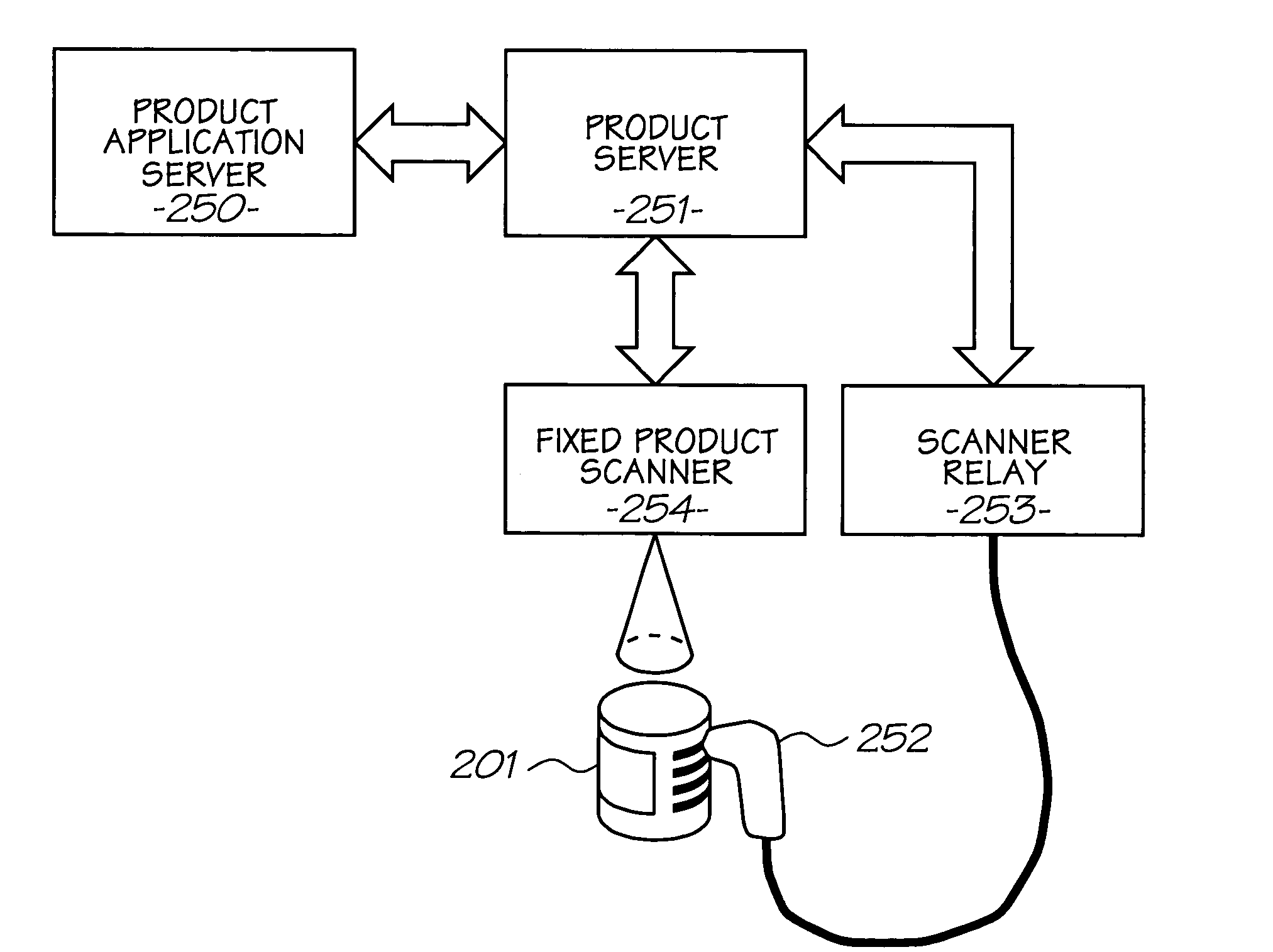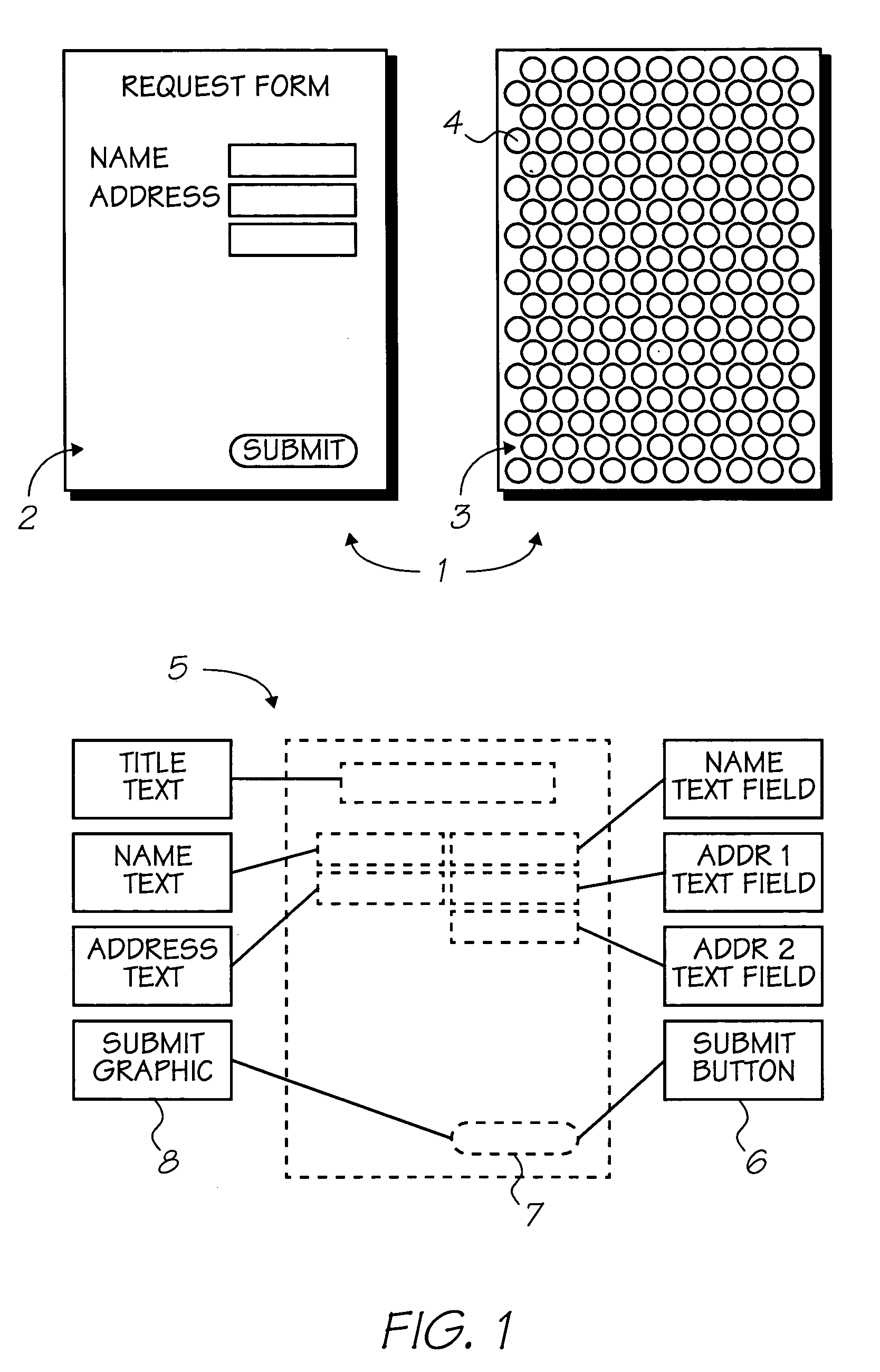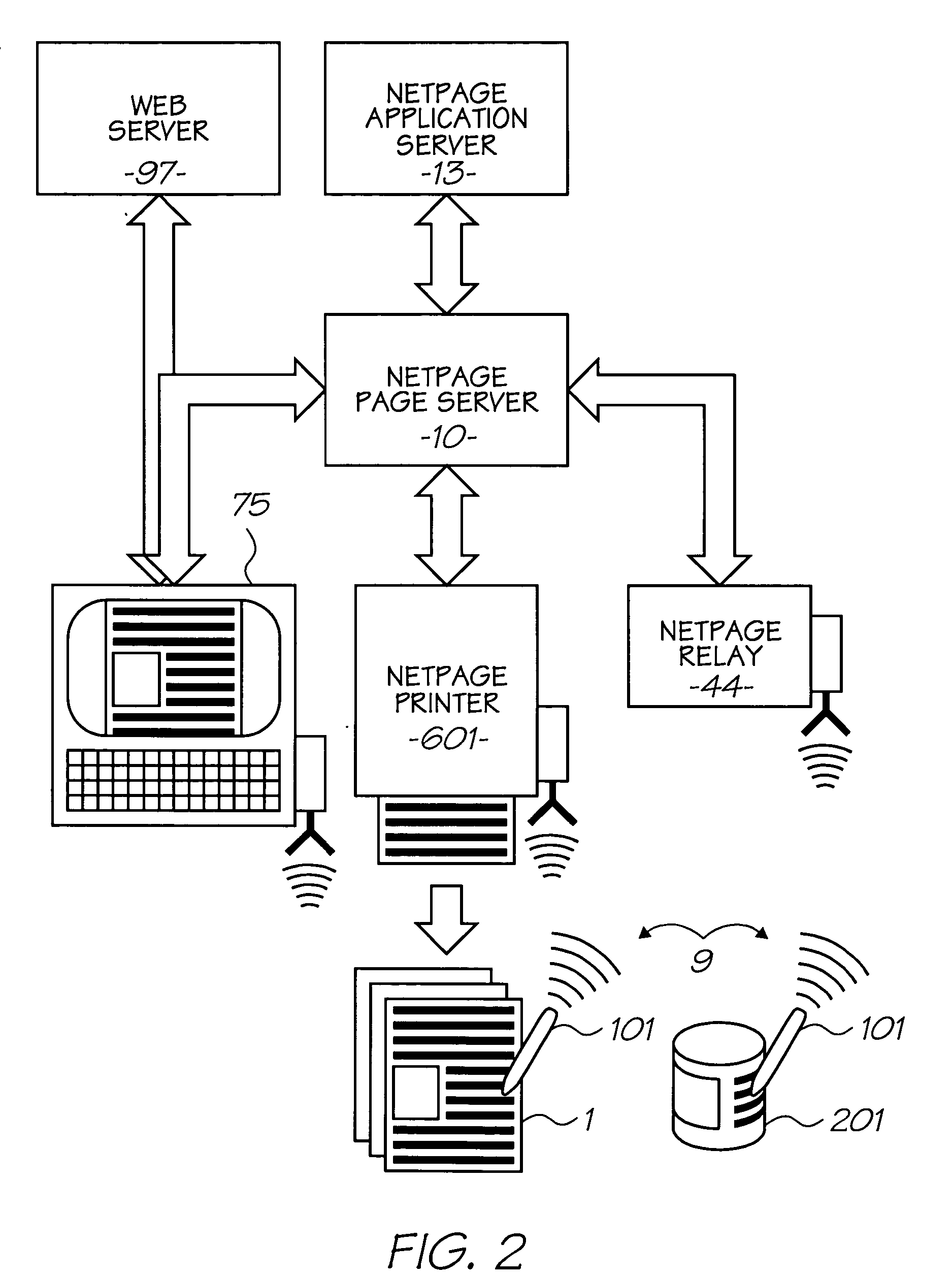Communication facilitation
a communication facilitation and object technology, applied in the field of unique object identification, can solve the problems of preventing successful detection and interpretation of bar codes, rfid tags, and affecting the appearance of product labels or packaging
- Summary
- Abstract
- Description
- Claims
- Application Information
AI Technical Summary
Benefits of technology
Problems solved by technology
Method used
Image
Examples
first embodiment
FIG. 58, FIG. 59, FIG. 60 and FIG. 61 show a Hyperlabel™ scanner 4000. The scanner is designed to image and decode Hyperlabel™ tags when its tip 4003 is brought into close proximity or contact with a Hyperlabel™ tagged surface. The scanner can be operated in free mode, in which it continuously and automatically scans tags within its field of view; or in triggered mode, in which it only scans tags when its trigger 4008 is held depressed. Although the scanner is designed with a limited depth of field, thus reducing the likelihood of unintentional scans in free mode, triggered mode can be used to avoid unintentional scans. The trigger may also be configured to be manually operated (as shown), or configured to be automatically activated when the scanner makes contact with the surface. Because an individual product item is tagged with a unique item ID, there is no possibility of duplicate scans.
During normal operation the scanner returns the item ID encoded in a Hyperlabel™ tag, but ign...
second embodiment
FIGS. 72, 73 and 74 show a Hyperlabel™ scanner 4000. FIGS. 72 and 73 use similar reference numerals to FIGS. 58 and 59 to denote similar elements. In this example, the optical assembly shown in FIG. 59 is replaced with a laser based scanning system, an example of which is shown in FIG. 74.
As shown in FIG. 74, a scan beam 4540 is produced by a laser 4502. The laser produces a narrowband near-infrared beam matched to the peak wavelength of the near-infrared ink used to print the Hyperlabel™ tags. An optional amplitude modulator 4503 allows the amplitude of the beam to be modulated, e.g. for ambient light suppression or ranging purposes as discussed below. An optional beam expander 4504 allows the beam to be reduced to produce the desired spot size. The laser is typically a solid-state laser.
A pair of mirrors 4506 and 4507 injects the scan beam into line with the retroreflective collection system, as described further below.
An optional focussing lens 4508 focusses the beam prior t...
PUM
| Property | Measurement | Unit |
|---|---|---|
| shrinkage rate | aaaaa | aaaaa |
| shrinkage rate | aaaaa | aaaaa |
| shrinkage | aaaaa | aaaaa |
Abstract
Description
Claims
Application Information
 Login to View More
Login to View More - R&D
- Intellectual Property
- Life Sciences
- Materials
- Tech Scout
- Unparalleled Data Quality
- Higher Quality Content
- 60% Fewer Hallucinations
Browse by: Latest US Patents, China's latest patents, Technical Efficacy Thesaurus, Application Domain, Technology Topic, Popular Technical Reports.
© 2025 PatSnap. All rights reserved.Legal|Privacy policy|Modern Slavery Act Transparency Statement|Sitemap|About US| Contact US: help@patsnap.com



